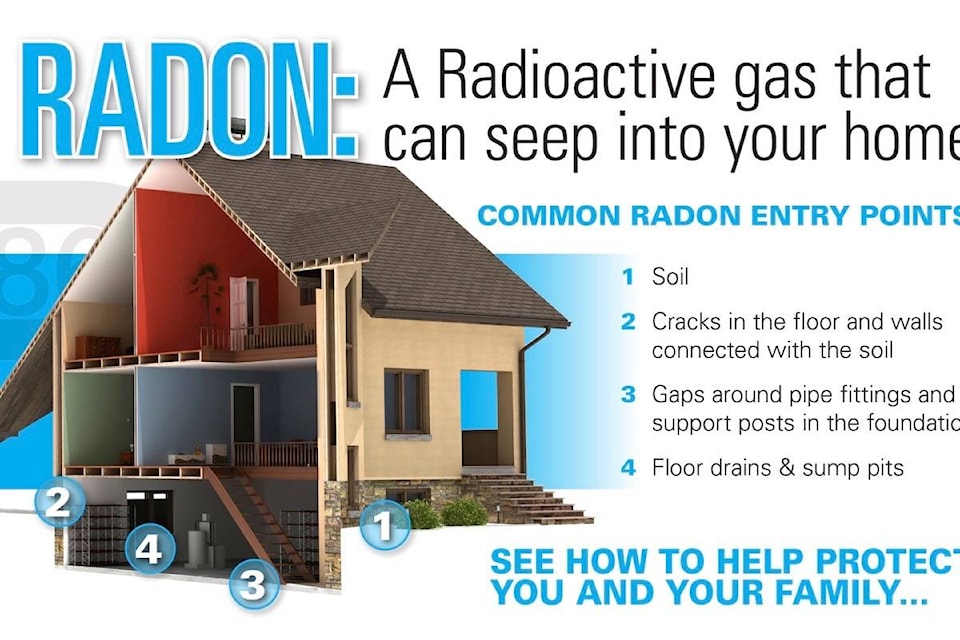One simple test could alert homeowners to the presence of a common, naturally occurring gas – and the second-leading cause of lung cancer.
Radon is a byproduct of decaying uranium, found everywhere in rocks and soil. A radioactive, odorless, colourless, inert gas, it moves through bedrock and soil to the outside air or into a building where it can accumulate if not vented.
While it’s always been there, awareness remains relatively low.
“The risk of radon is so new to people,” notes Al Modin, manager of South Cariboo Radon Services, a division of Off-grid Construction Services Ltd. However, “the only way to know if you have radon is to test.”
The risk
According to Health Canada, approximately 16 per cent of Canadian lung cancer deaths are attributable to radon exposure.
An increased lifetime risk of developing lung cancer is the only known health risk associated with exposure to high indoor radon levels. The risk is long term and depends on levels of radon, length of exposure and smoking habits. Smokers exposed to elevated radon levels have a significantly increased risk of developing lung cancer.
Because of the danger, the BC Building Code now requires a radon rough-in for all new Part 9 Buildings, notes Modin, also a Licensed Residential Builder.
Testing
Radon is found in almost every house, but concentration levels can vary greatly, even in similar homes next door to each other.
Levels fluctuate hourly and daily, so to ensure an accurate reading, best practices recommend long-term testing, between three months and a year, and during the colder months when homes aren’t as ventilated, says Modin, Canadian National Radon Proficiency Program certified.
Home test kits are available, but for those considering professional testing, Health Canada recommends asking several questions of potential companies:
- What type of radon test device do you provide, short term or long term? At least three months is recommended.
- Are you certified/trained to provide radon measurement services through the Canadian National Radon Proficiency Program?
- Are you familiar with Health Canada’s measurement protocols?
To test, Modin installs Alpha Track radon detectors in a home’s lower occupied levels where people spend more than four hours per day, such as bedrooms.
Mitigation
The good news? “If your house has a radon rough-in already installed and testing shows high radon levels, it’s a straightforward and relatively inexpensive fix. The sub-slab or sub-membrane depressurisation system is a proven method for mitigation. The way the foundation of the building was constructed will dictate the ease or difficulty of mitigation and therefore the cost,” Modin says, pointing to options to block radon’s entry into the home or vent it out.
To address radon, look for a contractor certified under the Canadian National Radon Proficiency Program.
